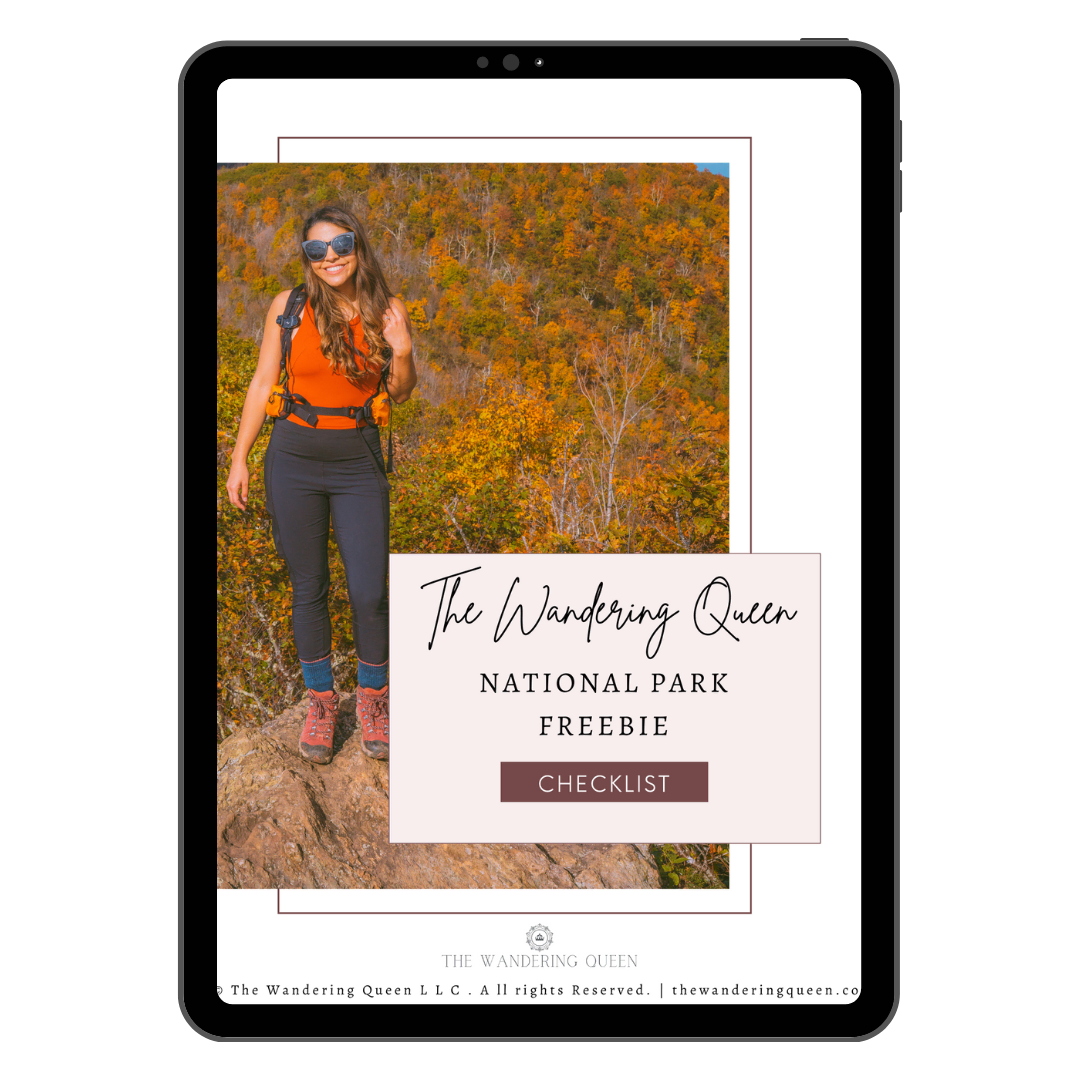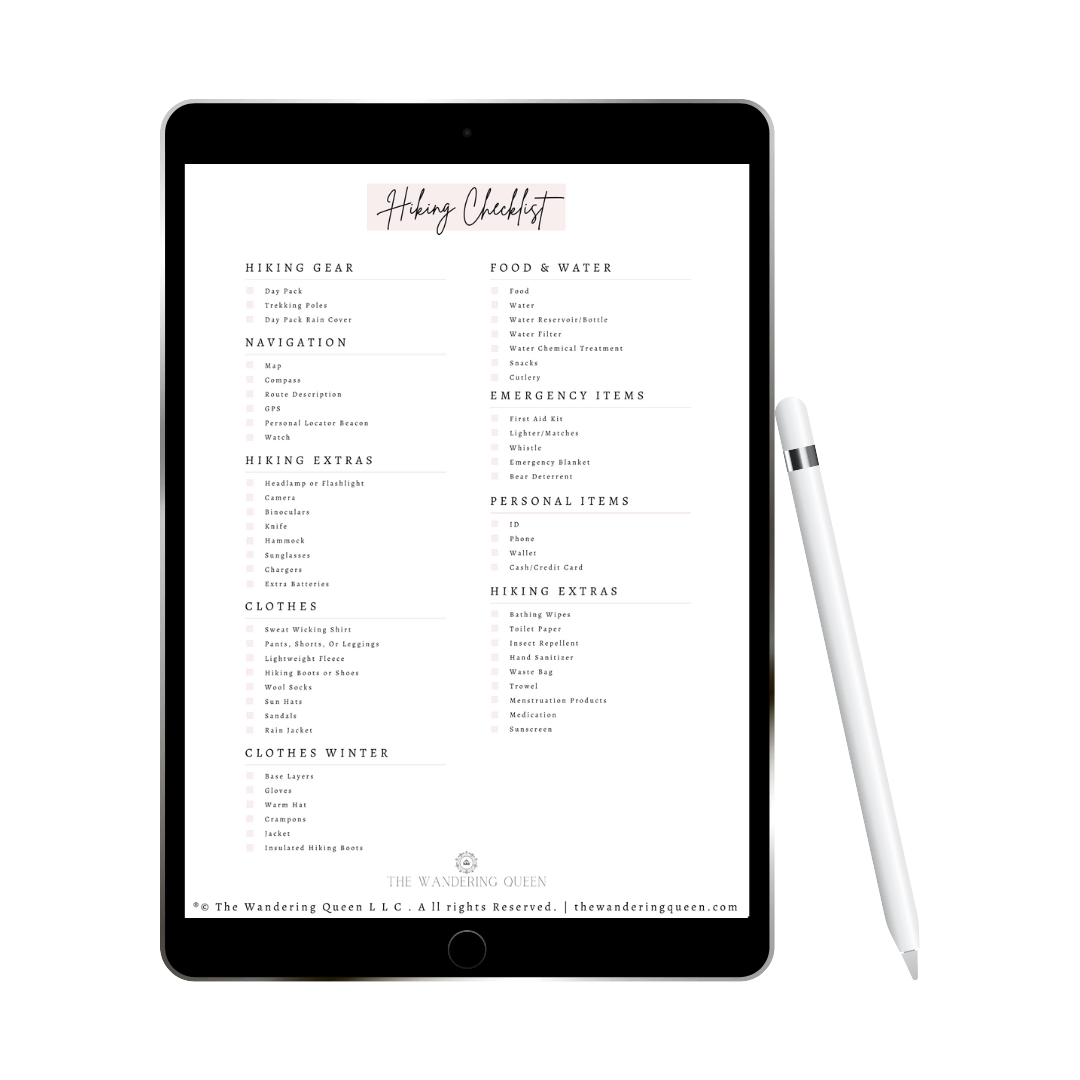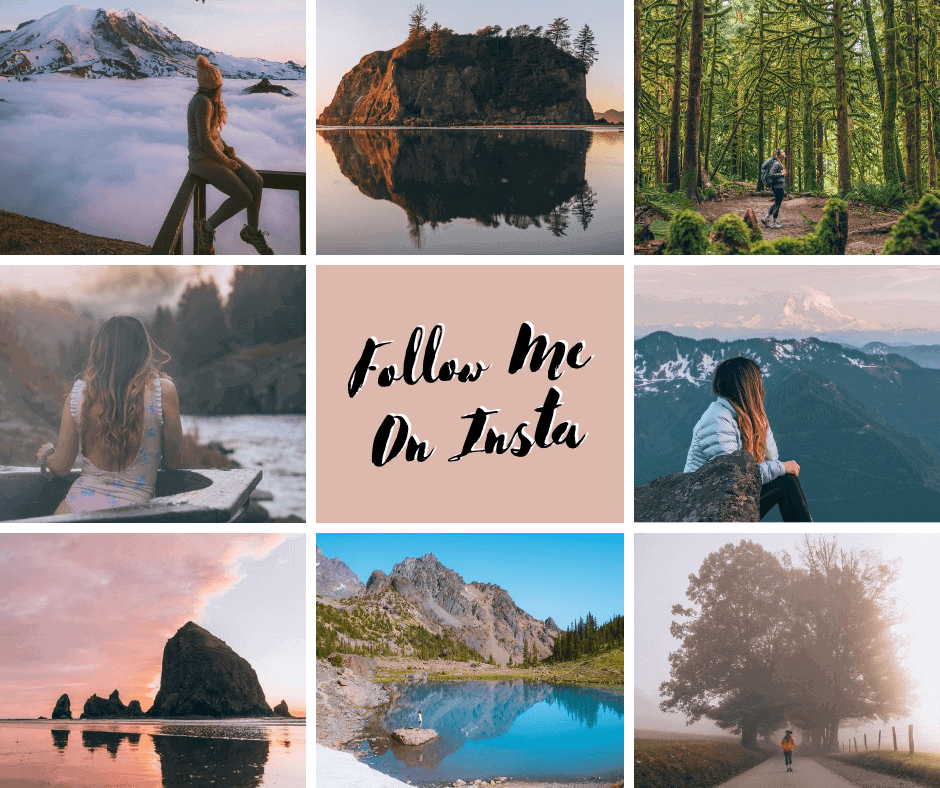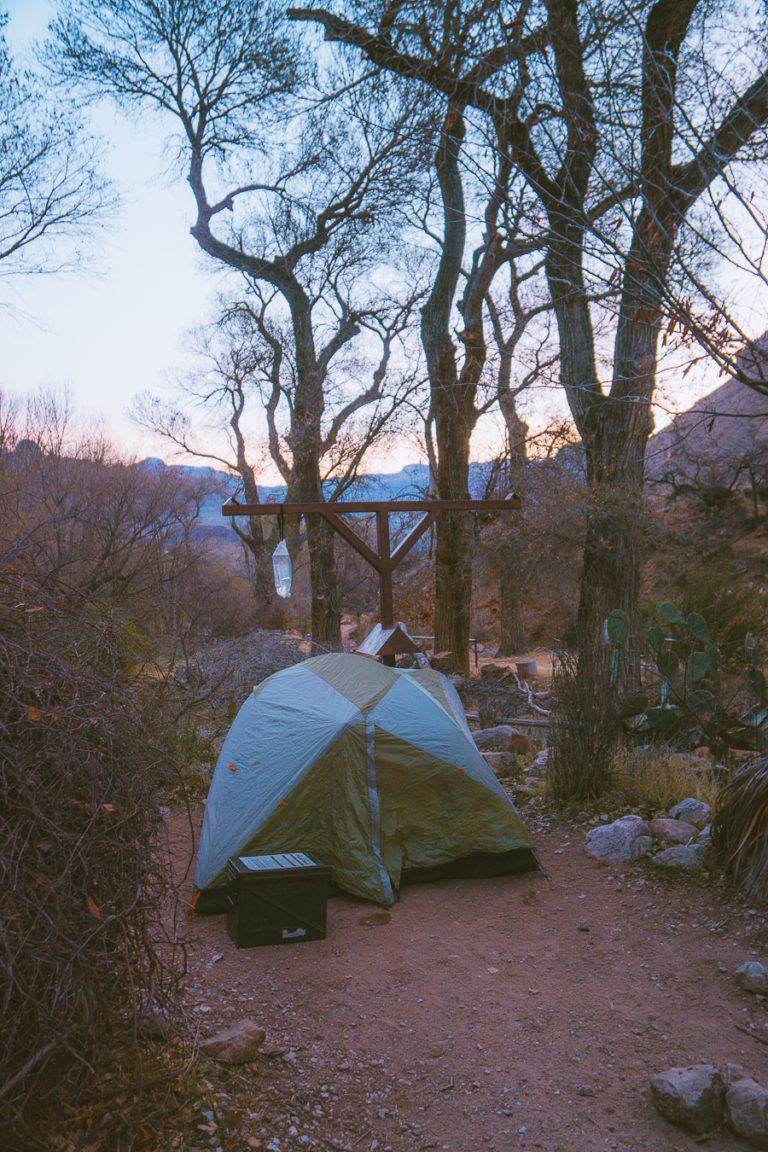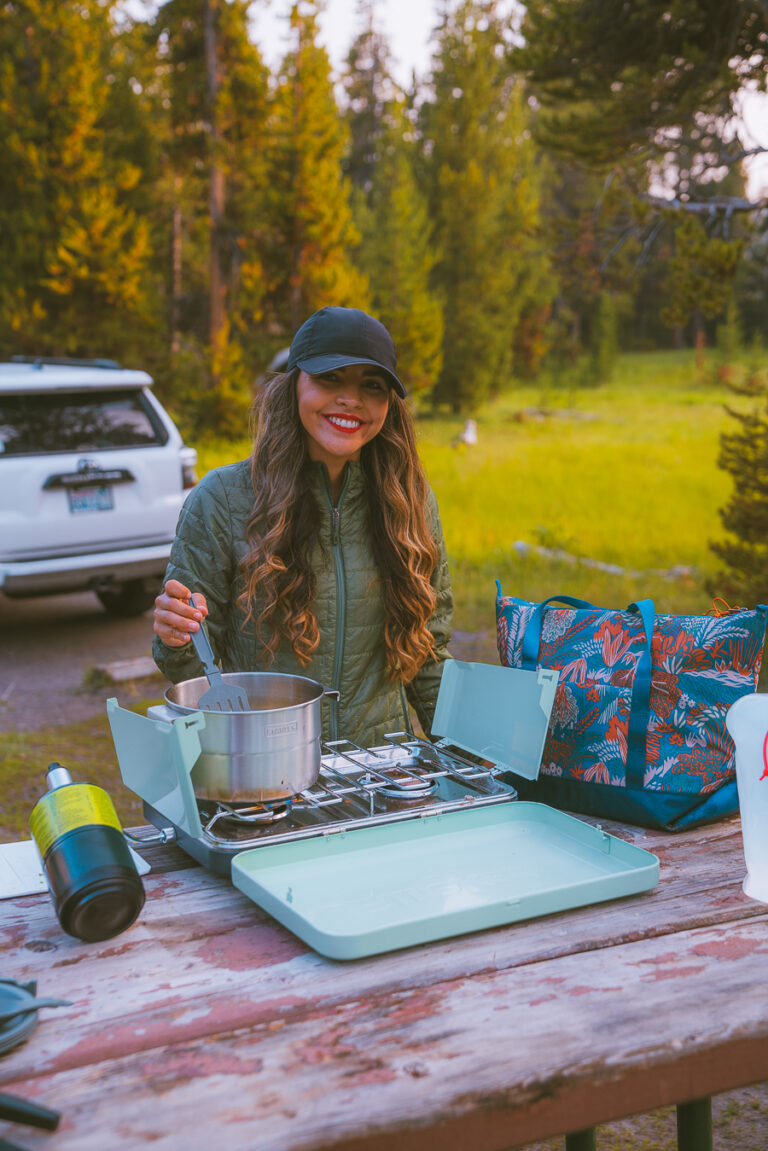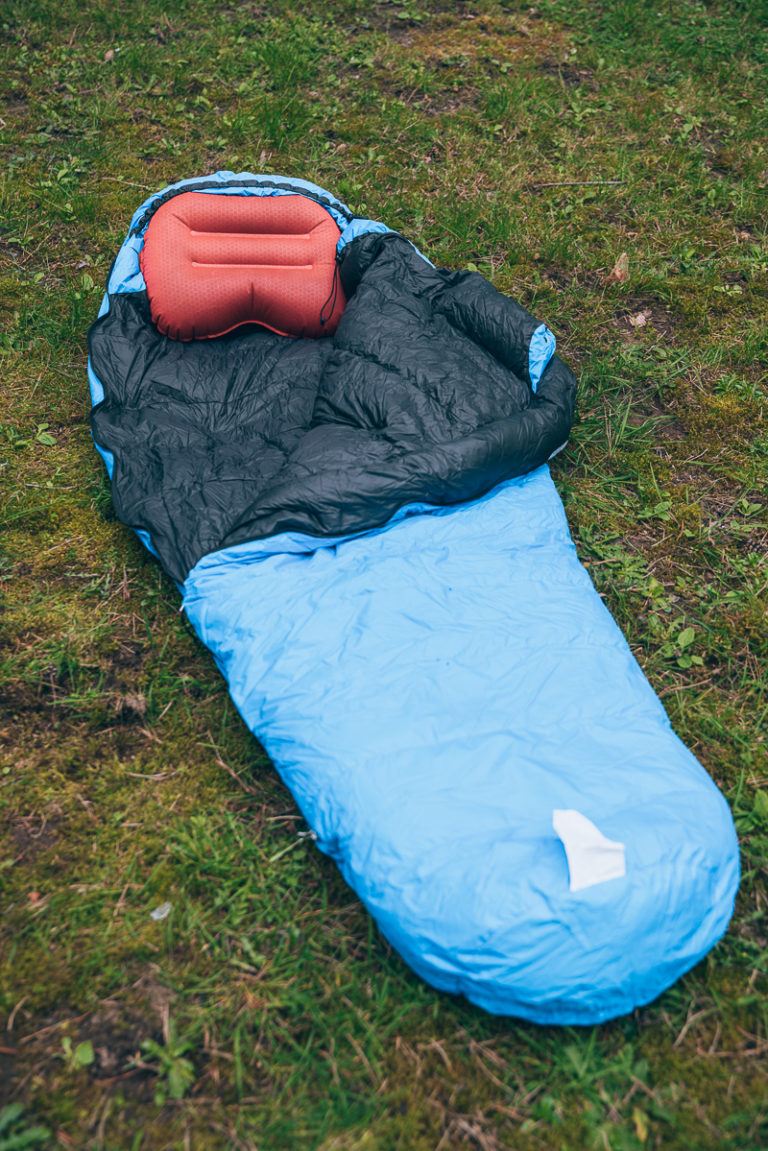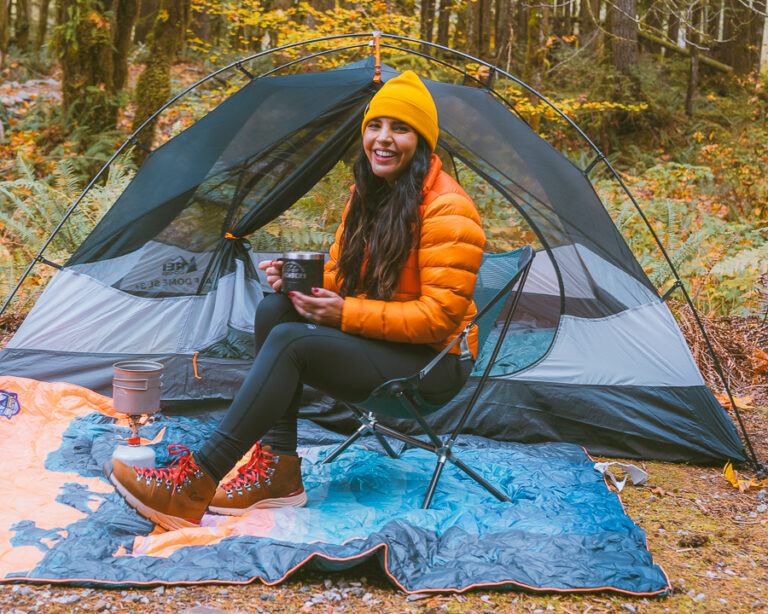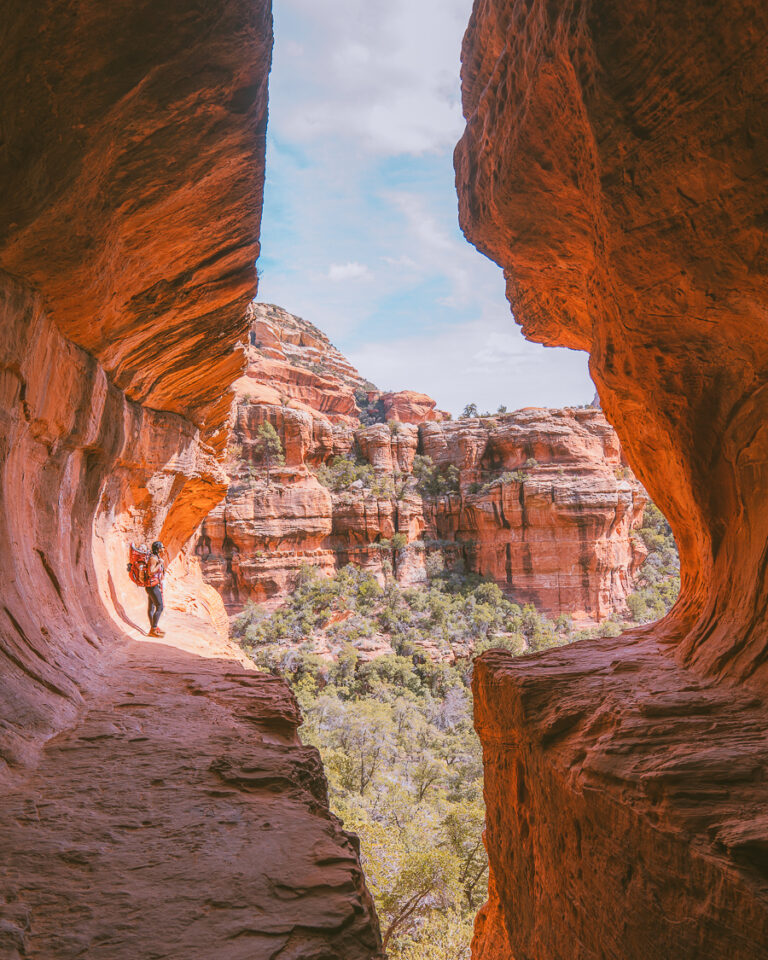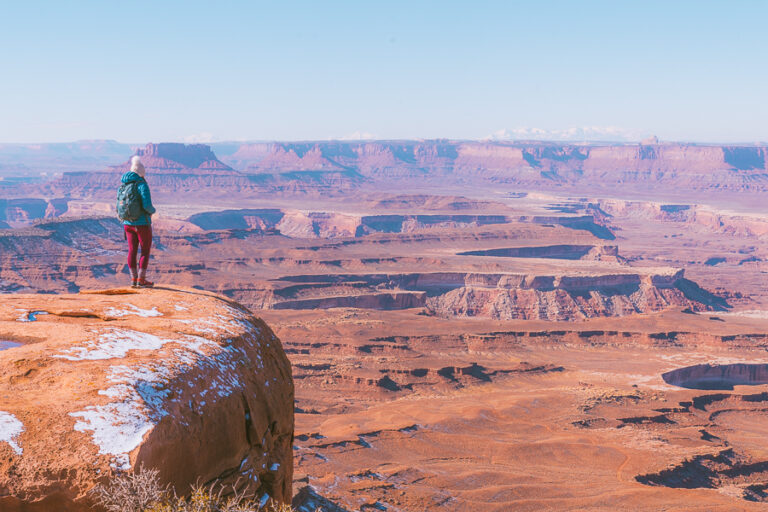Hiking in the Desert | Tips, Tricks & Travel Essentials
From the unforgettable scenery at the Grand Canyon to the otherworldly landscapes in Death Valley, the US has some stunning places to go hiking in the desert. While these locations are teeming with natural beauty, trekking through these dust bowls is no easy feat.
As such, it’s imperative you know all the essential tips and tricks for staying safe during an arid trek. From navigating the intense desert environment to knowing what to wear and when to trek these barren lands, there’s plenty to keep in mind.
Whether you’re planning a Utah National Parks road trip or want to visit any desert region for that matter, stick around for all the top tips you need to know. Who knows, even the most seasoned desert hikers could learn a thing or two.

Disclosure: This post contains affiliate links. If you click one of them, I may receive a small commission (for which I am very grateful for) at no extra cost to you.
Top Things to Keep in Mind for Your Desert Hike
To kick things off, let’s cover all the essential topics of desert trekking. You’ll find all the important details here on when to hike, what to wear, and the importance of food and water.
Avoid Going Hiking at Peak Heat

This may seem like a fairly obvious thing to point out, but desert temperatures are often scorching. Heat stroke and dehydration are a real worry — even in the winter months. As such, it’s best to avoid hiking at the peak times of the day, when the harsh sunlight is at its most intense.
The Best and Worst Time of Day to Hike in Deserts
It’s best to tackle a desert trail in the early morning or late afternoon when the sun’s harsh rays are at their lowest. This will help reduce sun exposure and ensure you have spots of shade to rest throughout your hike.
The worst time of day to hike is anywhere from midday to mid-afternoon. Surprisingly, the hottest part of the day is actually between 3 pm and 6 pm, so these are technically the most dangerous times of the day-to-day trekking. That said, it’s still best to avoid hiking at midday, as shade becomes increasingly limited.
The Best and Worst Time of Year to Hike in Deserts

Arguably, the best times of year to go hiking in a desert are early spring or late fall. These months — depending on where you are in the world — often present the most moderate weather for hiking. While the daytime temperatures will still get fairly hot, the mornings and late afternoons will present cool conditions, which are perfect for hiking.
Another good alternative is winter, but these months present icy conditions, which are often far too cold to enjoy a morning hike. Even in these winter months, the midday sun can result in heat stroke and dehydration — despite what the weather may ‘feel’ like.
The worst time to go hiking in a desert is, as you might expect, in the summer months. For example, the Sonoran Desert regularly exceeds 104°F (40°C) and often hits temperatures around 118°F (48°C) in summer.
Top Tip: The summer months — especially in the US — also mark the start of monsoon season. These can result in flash floods, which are equally as dangerous as heat-related illnesses.
A Note on Heat Exhaustion & Heat Stroke
Even if you hike in the early morning in the desert, the temperatures can still be fairly intense — especially in summer. As such, heat stroke and heat exhaustion are very real possibilities.
Heat stroke—or sunstroke—generally results from overexposure to the sun, resulting in your body’s inability to regulate its temperature. This is one of the most dangerous risks of desert hiking and should be treated immediately. It’s also essential to wear a hat when hiking in the desert, as the biggest cause of sunstroke is head exposure.
Heat exhaustion, on the other hand, is due to excessive loss of water and salts from the body. While not as serious as heat stroke, it should be treated as soon as possible.
Here are some top tips to help you avoid these heat-induced illnesses:
- Take breaks in shady areas regularly.
- When near water sources, get in or wet your clothes to help cool down.
- Always wear a hat, and keep it wet/damp when possible.
- Regularly drink water to stay hydrated.
Top Tip: Learn about the differences between heat stroke and heat exhaustion here.
Wear the Correct Clothing for Desert Hiking

As far as clothing goes, what you wear can have a significant impact when hiking in the desert.
First off, it’s best to wear light colors. Whites, pastels, and beiges don’t absorb direct sunlight nearly as much as darker colors do. This will help keep you cool, and when you pair this with breathable, fairly loose-fitting clothing, you should be in a good place.
It’s also worth noting that natural fabrics such as linen and cotton are best as they are breathable and light-fitting. That said, you may be able to find some synthetic fabrics that have moisture-wicking properties, which will also be worthwhile.
What to Wear When Hiking in the Desert

The above taken into consideration, here’s a list of the best things to wear in the desert:
- Wide-brimmed hat — Ensure the hat protects the entirety of your face, and if you can get one that protects your neck, that’s even better. >>>Buy this sunhat
- Sunglasses — The glare from the sun can be intense, so make it a bit easier to see with a good pair of polarized sunglasses. >>>Get these sunglasses
- Long-sleeve shirt— Long sleeves with natural materials are breathable and ensure you’re protected from potential sunburn. >>>Buy this long sleeve shirt
- Base layers — Opt for natural Merino wool base layers for breathability on chilly mornings and nights. >>>Buy this base layer
- Long pants — Be sure to get some comfortable, lightweight, long pants that will protect your legs from wind and sun exposure. >>>Get these long pants
- Comfortable underwear — Having a pair of comfortable underwear that is both breathable and fast drying is a must. >>>View my hiking underwear list
- Quality Jacket — Yes, you may be in the desert, but the nights get extremely cold. As such, pack a warm, wind-resistant jacket. >>>View the best down jackets
- Wool socks — They may seem too hot for a desert hike, but wool socks are fast-drying, breathable, and are the best for preventing blisters. >>>Buy these socks
- Comfortable hiking boots — It goes without saying that a comfortable pair of hiking boots is essential for trekking the uneven terrain of deserts. >>>View my favorite hiking boots
- UV protective Buff — It’s not a must-have, but UV protective buffs are great for your neck and to help cool down if soaked in water. >>>Buy this buff

Top Tip: While I cover everything you’ll need for a day hike in the desert, here’s a list of what to wear while hiking for every environment.
Claim your FREE Hiking Checklist
Ready to start hiking? Grab my free hiking checklist and never forget anything at home!
Bring Enough Water for your Desert Hike

I can’t stress enough how important it is that you have a plentiful water supply when hiking through the desert. One time, I didn’t bring enough water while backpacking through The Needles at Canyonland National Park. As a result, we had to cut our trip short and head back to the campsite early in the morning.
Dehydration in the desert is no joke, as it can quickly sneak up on you without warning. Generally speaking, you should aim to carry around 1 liter of water for every five miles you hike.
There’s no real benefit to drinking loads before hiking either, as that won’t guarantee you beat dehydration. As a general rule of thumb, aim to drink whenever you’re thirsty, and make sure you pack enough water in relation to the duration of your trip.
While water is heavy—a liter weighs 2.2 lbs—it is a necessity that you shouldn’t skimp on. If backpacking, it’s best to take no less than three liters of water per day for hydration and meal preparation and two liters for hygiene.

Top Tip: While a water filter is a great addition to any hiking or backpacking checklist, you shouldn’t rely on this as your only source of water. Not every trail has a watering hole or water source during the trek — especially for desert hikes — so always pack water accordingly.
A Note on Dehydration
The first sign of dehydration is a headache, which is usually the same for heat exhaustion and sun stroke. Other signs of dehydration include fatigue, dizziness, dark-colored urine, and extreme thirst.
If you do happen to feel any of these symptoms during your trek, rest straight away and try these techniques to help:
- Find a cool and shady spot to rest.
- Drink water, not excessively, but enough to quench your thirst.
- Wet your buff and/or hat to cool down your head (your skin will also absorb water, which can help).
Note: While staying hydrated is essential, the risk of overhydration is just as dangerous as dehydration. So, please be aware of this and regulate your drinking during the hike.
Bring a Lot of Food
Whether wandering through the wilderness at Bryce Canyon National Park or venturing along the otherworldly plains of Death Valley, having food is essential. Not only does food ensure you can keep your energy levels up, but it also gives you a reason to stop and enjoy the scenery.
It may sound a bit bonkers, but high-energy salty snacks are ideal during a trek. This is largely because you’ll need a high-calorie count to keep your energy levels up and enough salt to ensure your body keeps sweating.
As a general rule of thumb, there are four food types you should aim to eat to help keep energy levels up and replenish your electrolytes. These include foods rich in salt, magnesium, potassium, and calcium.
As for what to avoid, it’s best to steer clear of highly processed, sugar-rich meals. These tend to offer a spike of energy but not the long-term benefits of carb-dense foods.

Top Tip: No matter the length of your hike or backpacking trip, it’s always better to overpack on food than under pack. Make sure you have meals sorted and snacks to help keep you going throughout the journey.
Food to Pack When Hiking in the Desert
Here’s a quick list of the best snacks and beneficial foods to pack for your hike:
- Salted nuts — High in salts, fats, and calories.
- Trail Mix — High in salts.
- Dried fruits and vegetables — High in magnesium and potassium.
- Fresh fruits like bananas, oranges, and figs — High in potassium and magnesium.
- Energy bars — High in carbohydrates.
- Protein-rich sandwiches/wraps — Can include things like tuna, chicken, falafels, etc.
- Hydration packs — These are great for boosting your electrolytes and generally get mixed into your water bottles.
Bring Proper Gear for Desert Hikes

Whether you’re going on a day trek or backpacking through the desolate landscape, there is some essential hiking gear you’ll need. Aside from clothes, food, and water (which have already been covered), you’ll want to carry some basic survival tools.
Let’s cross our fingers you won’t need them, but emergency kits are a necessity for any desert experience. From heat stroke and dehydration to extremely dangerous animals and flash floods, there’s plenty that can happen while wandering through the wilderness.
The basics you should have include a first aid kit, sunscreen, and multi-tool. However, if you’re going on a fairly lengthy exploration, it’s best to have all of the items listed below for peace of mind.
Download my free Outdoor Photography Guide
Desert Hiking Essentials for a Backpacking Trip
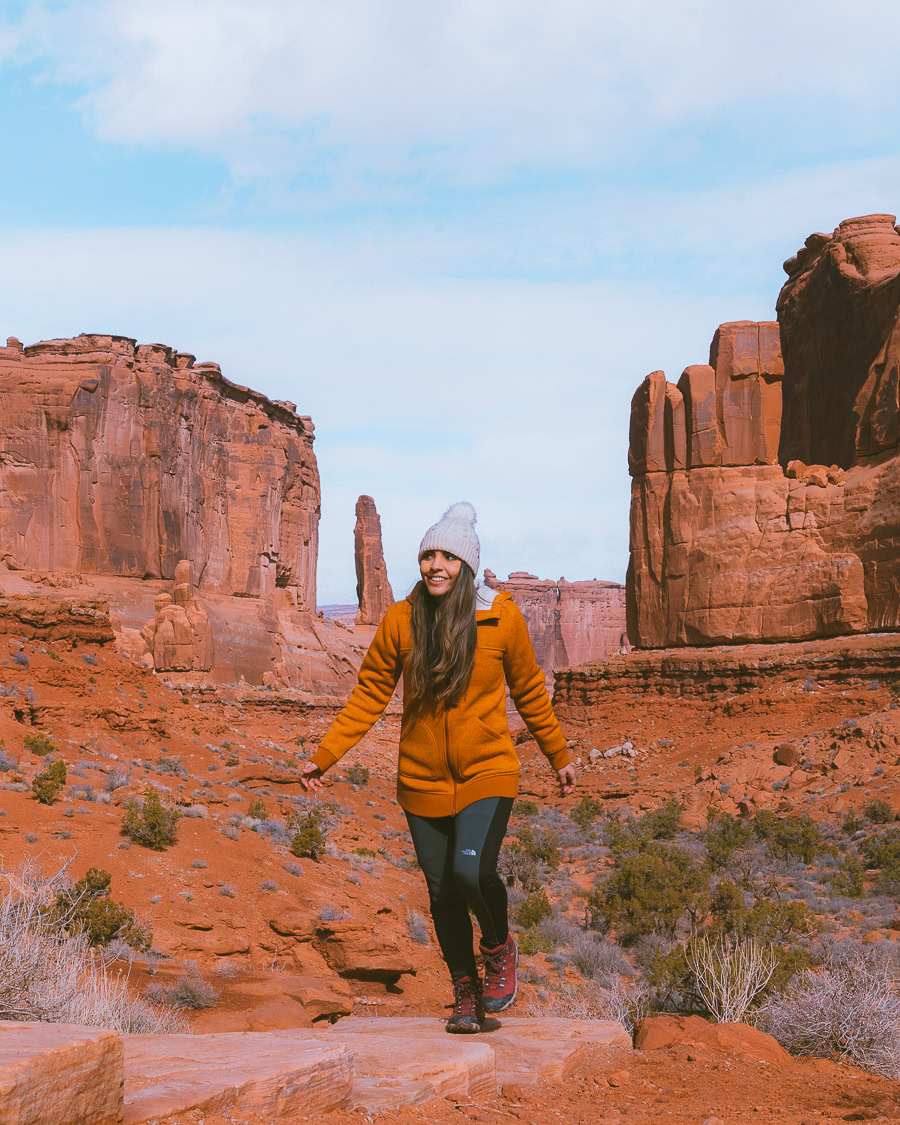
- First Aid Kit — From small cuts and blisters to more serious injuries, having one of these kits is a must. >>>Buy this first aid kit
- Sunscreen — Sunburn can be just as severe as any other danger in the desert, so having a high SPF sunscreen is essential. >>>Get this sunscreen
- Comb — It may sound like an odd inclusion, but if you ever get cactus spines stuck in your shoes and clothes, a comb is the easiest remedy. >>>Buy this comb
- Headlamp — Whether hiking in the early morning or late afternoon, it can get dark fairly quickly, and this is where a rechargeable flashlight comes in handy. >>>Buy this headlamp
- Mirror compass — To help ensure you don’t get lost, a compass is a must. And if you do get lost, having a compass with a signal mirror can help save your life. >>>Get this mirror compass
- Emergency Bivvy — These generally contain an emergency whistle and a heat reflective bivvy, as it can get bitterly cold at night in the desert. >>>Buy this bivvy
- Waterproof matches — Make sure you’re always able to make a fire in an emergency with waterproof matches. >>>Get this match set
- Multi-tool — From cutting rope to taking out splinters and fixing equipment, a multi-tool is imperative. >>>Buy this multi-tool
- Backpack — Whether going on a day hike or backpacking through the desert, make sure you have a comfortable backpack that can fit everything you need. >>>View these backpacking packs
- Tent — Even if you’re just doing a day hike, it’s always a good idea to have a backup shelter if needed. >>>View my favorite backpacking tents
- Water filter — It’s always a good idea to have a substitute water treatment solution when hiking, no matter the environment. >>>View the best water filters
- Backpacking stove — If you are doing a multi-day trek, a backpacking stove will ensure you can make meals without any fuss. >>>View these stoves
Top Tip: If you’re planning on desert backpacking, read my tips for camping hygiene.
Carry a Cellular Phone and/or an Emergency Device
Bringing your cell phone and/or an emergency device with you when you venture into the desert deserves a section all to itself. Having your phone with you is almost a given, as many hikers nowadays use digital maps.
But your phone isn’t just beneficial for knowing where you are and taking stunning pictures. These devices we’ve become so attached to are our first point of contact for reaching emergency personnel.
That said, cell phones can lose battery and don’t always have a signal, especially when trekking through a national park’s more deserted regions. This is where an emergency device becomes your next best friend.
These devices have quite a few benefits:
- They don’t require a subscription.
- They have one purpose: to send out an SOS signal requesting help.
- They use a global satellite network, ensuring they can pinpoint your location with extreme accuracy.
- They will connect to your nearest search and rescue team.
- Their batteries can last for years and only need to be changed after a certain number of years or after the device has been activated. You’ll need to change the battery with your emergency device manufacturer.
As you can see, an emergency device is, in some regards, a necessity when hiking through the desert. Some models are also dual-purpose, having bright lights attached to them to help searchers find you and ensure you’re not lost in the dark. You can also get satellite messengers, but these tend to be a lot more expensive and often require subscriptions.
>>>Get An Emergency Device Here<<<

Note: If you have activated your emergency device, stay where it was activated. Once activated, stay in a shady area nearby, and remember that search and rescue efforts take time.
Tips for Staying Safe in the Desert

While a lot has been covered, there are a few more tips to help ensure you have a safe experience venturing through the outback.
- Note where the nearest ranger station is — Before embarking on your hike or backpacking trip, make a note of where the nearest ranger station is. This can help you understand where the park rangers will be and ensure you can reach them easily if needed.
- Bring layers of clothing — While a hot day is almost guaranteed, desert environments are known for having one of the widest temperature ranges. As such, daytime temps tend to be vastly different from nighttime, so ensuring you have layers to keep warm at night is a must.
- Pack light — Exhaustion doesn’t just come about from the heat, as carrying a heavy backpack can contribute to fatigue. Aim to pack light with the bare essentials you need for clothing, hiking gear, and lightweight food. This is crucial as your water will add a lot of weight.
- Be aware of wildlife — From poisonous snakes and scorpions to larger land animals, being aware of your surroundings at all times is key. Many of these animals can blend into their surroundings, and snake bites are most common around dusk. As a general rule of thumb, step on rocks with overhangs rather than over them to help prevent accidental snake bites.
- Research the park’s hot spots — Every desert is different, so before exploring your region of choice, do some research on its hot spots. These are regions of the desert where the atmosphere is generally hotter than usual. If your hiking trail passes through these hot spots, aim to go through these areas at the coolest time of day.
- Plan your stops for long hikes — Sites like AllTrails have photos and comment sections from hikers who have done the trails before. This can be especially helpful for planning your route and stops along the way.
- Bring a paper map — While a digital map is great, your cell phone may die or lose connection. To avoid being lost in the dark, print out a copy of the trail.
- Check the weather forecast — Before hiking, it’s essential that you check the weather. This is especially important in summer so you avoid a flash flood, extreme heat, and other potentially dangerous weather conditions.
- Do some endurance training — Remember, hiking in the heat is nothing like hiking in moderate weather. You’ll lose energy levels far quicker in hotter conditions, so it’s hugely important to do some strength training before hiking in the desert.
- Be aware of rock cairns — These manmade rock piles are often maintained by park staff to help hikers know they’re on the right path. These can help you during your hike, but it’s imperative you don’t add to these rock cairns, knock them over, or tamper with them of any kind. Don’t build your own rock cairns either, as this can disorient future hikers. As a general rule, practice the leave no trace principles when hiking through the desert.

Top Tip: If you’re a newcomer to nature walking, take a look at these beginner hiking tips.
8 Best Desert Hiking Trails in the US

Now that you know all the ins and outs of hiking in the desert, it’s time to have a quick look at all the best trails in the US. You’ll find all these magical treks across the various national parks in the country, with each region having something unique to offer.
Hall of Horrors Trail
- Location: Joshua Tree National Park
- Mileage: 0.6 miles (loop)
- Elevation Gain: 26 feet
- Difficulty: Easy
- Trail Guide: Link

If you’re planning a lovely day trip from Los Angeles, consider this relatively easy trek through the Hall of Horrors. It’s a short, scenic hike through a forest of Joshua trees, which then leads you to an enigmatic slot canyon that any climber will fall in love with.
The slot canyon offers the perfect place to rest in the shade, have some snacks, and just admire the unique rock formations and plant life.
Petroglyphs at King Canyon
- Location: Saguaro National Park
- Mileage: 1.9 miles (out-and-back)
- Elevation Gain: 259 feet
- Difficulty: Moderate
- Trail Guide: Link
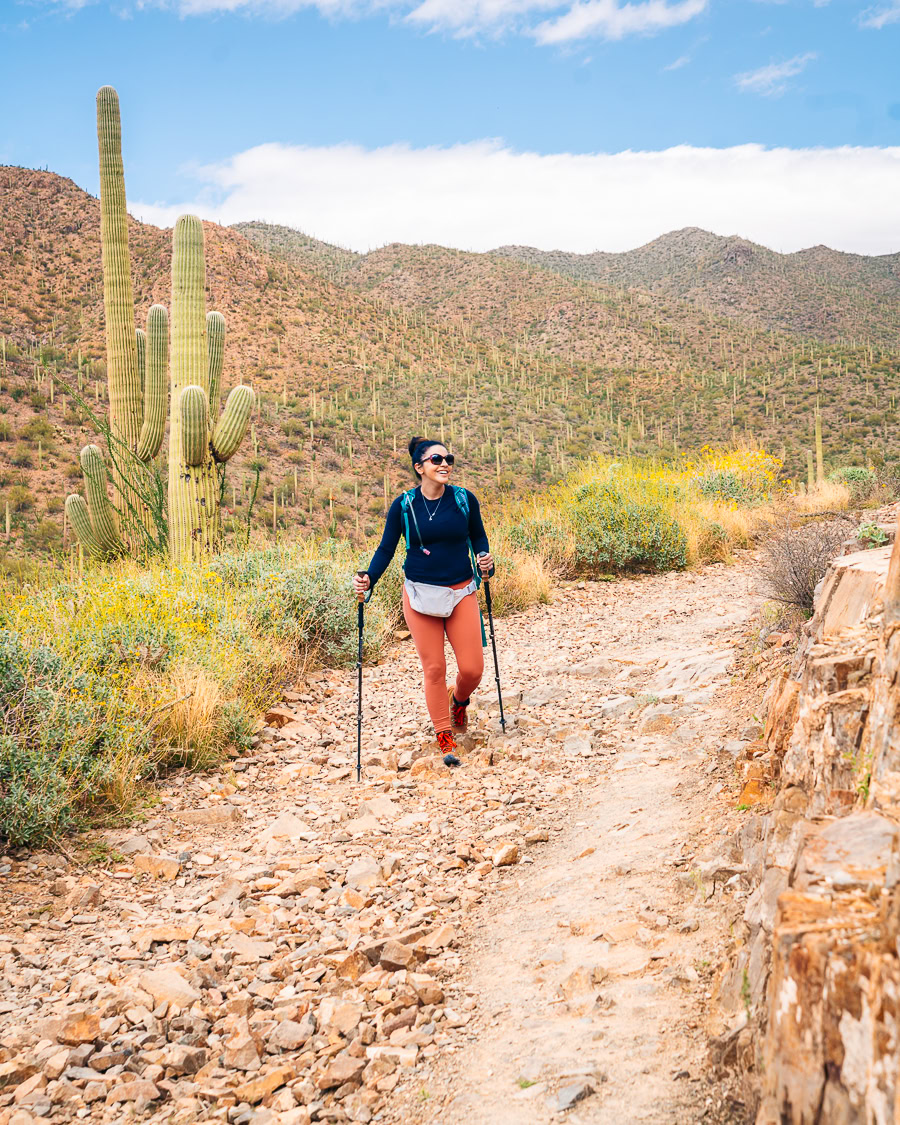
If you’re looking for a trail that also caters to a treasure trove of historic landmarks, then this hour-long hike is worth adding to your to-do list. It’s just 30 minutes from the center of Tucson and is great for new hikers looking to test their skills. With scrambling sections due to several spillovers, it’s sure to test your mettle.
Despite the slight difficulty, it’ll all be worth it, as O’odham and Hohokam petroglyphs are carved into rock boulders throughout King Canyon.
Golden Canyon Trail and Badlands Loop to Zabriskie Point
- Location: Death Valley National Park
- Mileage: 6 miles (loop)
- Elevation Gain: 1,062 feet
- Difficulty: Moderate
- Trail Guide: Link
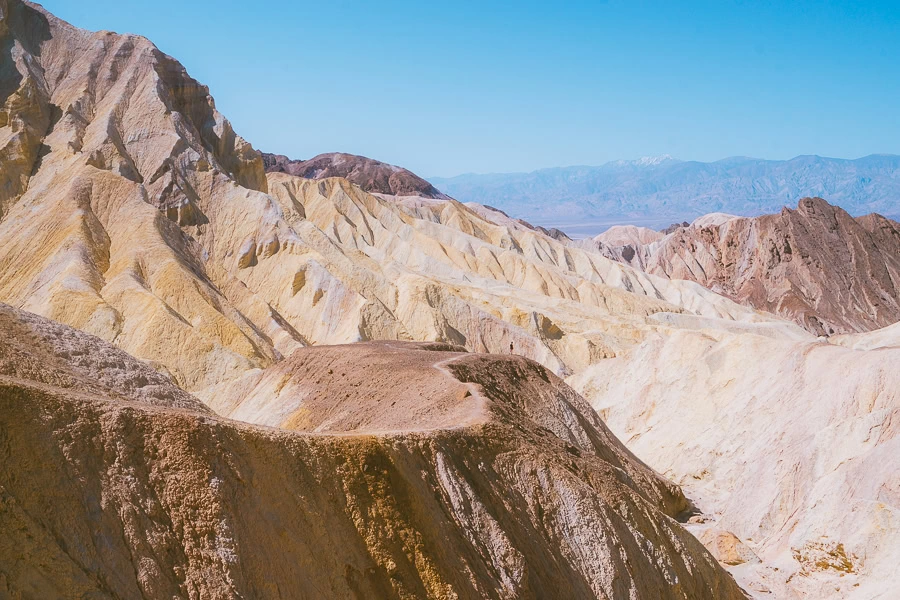
With so many hiking trails to discover in the hottest part of the world, why not pair two of the parks best into one epic trek? Throughout this three-hour hike, you’ll see some truly stunning landmarks, including Gower Gulch, Manly Beacon, Red Cathedral, and the iconic Zabriskie Point.

Note: There’s little to no shade along this trail, so please make sure you avoid hiking between 10 am and 4 pm.
Wall Street, Queens Garden, and Peekaboo Loop
- Location: Bryce Canyon National Park
- Mileage: 6.3 miles (loop)
- Elevation Gain: 1,499 feet
- Difficulty: Moderate
- Trail Guide: Link

From the otherworldly hoodoos to the magnificent natural arches, hiking this figure eight trail will show you all the stunning reasons why Bryce Canyon should be on everyone’s bucket list. It’s a fairly up-and-down trek as you meander alongside the canyon walls.
Throughout the trek, you’ll pass some truly spectacular photo spots. These spots include Sunrise and Sunset Point, Queen Victoria Hoodoo, Peekaboo Arch, the Hindu Temples Hoodoo, and the iconic Wall Street region.
Angels Landing
- Location: Zion National Park
- Mileage: 4.3 miles (out-and-back)
- Elevation Gain: 1,827 feet
- Difficulty: Hard
- Trail Guide: Link
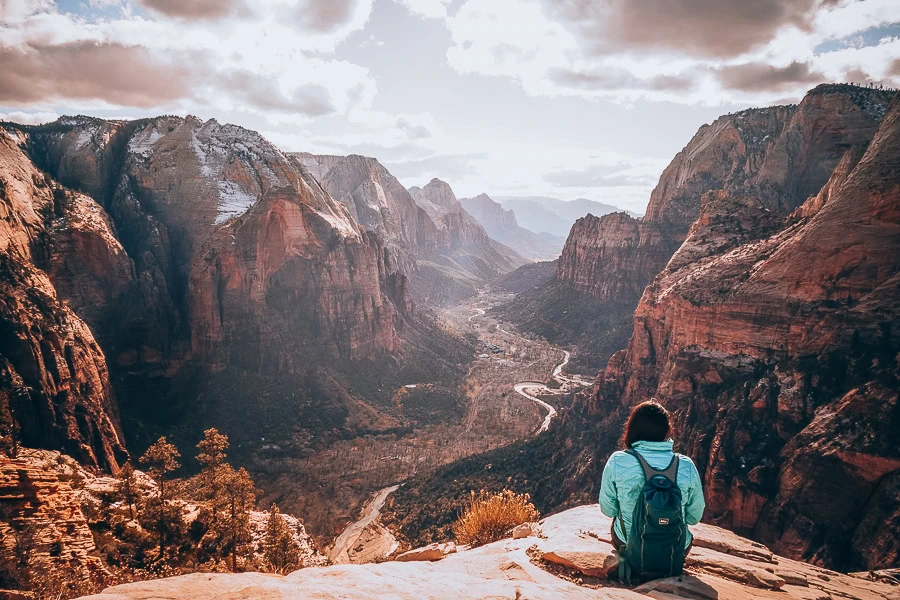
If you’re in search of a hike that boasts one of the best scenic lookouts in the world, grab your spot to trek up Angels Landing. This is a grueling hike that has some truly sketchy sections, so if you’re not fond of heights, maybe think twice about taking on this hike.

There are some shady spots along the way, but the end of the trail is completely exposed to the sun.

Note: You’ll need a permit from the lottery system set up by the National Park Service if you wish to take on this hike.
Murphy Point Trail
- Location: Canyonlands National Park
- Mileage: 3.4 miles (out-and-back)
- Elevation Gain: 177 feet
- Difficulty: Easy
- Trail Guide: Link

As you might expect, the Canyonlands is blessed with an abundance of scenic viewpoints. That said, none are quite as spectacular as the one at Murphy Point. This relatively easy trail has little shade, so be sure to dress appropriately.
The best time to take on the hike is around sunset when the fiery sky lights the canyons below in a stunning glow.
Grand Canyon South Rim Trail
- Location: Grand Canyon National Park
- Mileage: 12.7 miles (out-and-back)
- Elevation Gain: 584 feet
- Difficulty: Moderate
- Trail Guide: Link

The debate of which side of the Grand Canyon to visit will never rest, but few can deny that the South Rim Trail is one of the best treks in the park. Starting at the South Kaibab Trailhead, this slightly challenging route meanders along the South Rim.
Throughout the trail, you’ll be able to visit all 14 of the stunning viewpoints along this side of the Grand Canyon. You’ll also be able to rest at many of the visitor centers and picnic sites along the rim.

Note: Parking is limited, so it’s best to use the park shuttle.
Devil’s Garden Loop Trail
- Location: Arches National Park
- Mileage: 7.9 miles (loop)
- Elevation Gain: 1,086 feet
- Difficulty: Hard
- Trail Guide: Link

Last but certainly not least, enjoy the adventure of a lifetime through Devil’s Garden at Arches National Park. This challenging route will take you to most of the park’s attractions, including Tunnel Arch, Landscape Arch, Double O Arch, and Private Arch.

This trail will take around four hours to complete. It doesn’t have a lot of shade, so aim to start trekking fairly early in the morning.
FAQs About Trekking Desert Trails

Before heading off, here’s a quick look at some common questions and their answers about desert trekking.
Is It Better to Hike in the Desert at Night or Day?
Try to avoid hiking in the desert between 10 am and 4 pm. This is when the desert will be at its hottest with the most sun exposure. While night is good for hiking, early morning and late afternoon are the best times of the day to go for a trek.
What to Do if You Get Lost in the Desert?
If you get lost in the desert, the first thing you should do is aim to preserve your water and reduce sweating. If you don’t have phone signal or an emergency device, then look for rock cairns and use your compass for navigation.

Tip: Throughout your trek, keep a notebook of the directions you head in. This can help you find your way back to the trailhead if the path is not well-marked.
What Are the Best US National Parks for Desert Hiking?
The US has loads of national parks for you to explore, with arguably the best desert experiences being in Arizona, Utah, and California. These include Death Valley, Arches, Zion, the Grand Canyon, and Canyonlands National Park.
Final Thoughts on Hiking in the Desert

And just like that, you’re all set to begin hiking through the desert. Remember to bring plenty of water and snacks, take regular breaks, and always be prepared. Whether hiking through the American Southwest or any other part of the world, always remember to stay safe and be aware of the potential dangers of desert hiking.
PS: If you’re looking for more hiking inspiration, consider grabbing a copy of my Washington e-book.

